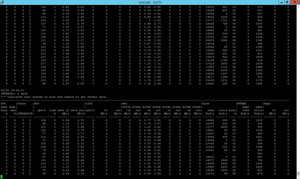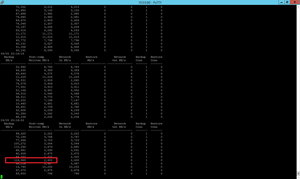3 Data Domain Command-Line Tricks
I've been using Data Domain deduplicating storage systems as part of my datacenter and availability strategy. Like any modern storage system, there are a lot of features available, and it's a very capable and purpose-built system. In the course of using Data Domain systems over the years, I've learned a number of tips, tricks and ways to obtain information through the command line, and wanted to share them. Personally, I prefer user interfaces or administrative Web interfaces, but sometimes real-time data is best retrieved through a command line.
Here's the first command:
system show stats int 2
This command displays a quick look at real-time statistics for key system areas, including: CPU, NFS and CIFS protocols, network traffic, disk read and write rates and replication statistics. This is a good way to measure raw throughput on the storage system. Figure 1 shows this command in action:
 [Click on image for larger view.]
Figure 1. The system statistics in one real-time view.
[Click on image for larger view.]
Figure 1. The system statistics in one real-time view.
The next command is probably my new favorite command to show Data Domain Boost statistics in real time. Data Domain Boost is a set of capabilities for products outside the storage system that make backups faster. One way to look at it is that the deduplication table is extended out to additional processors. This is important, as it will greatly reduce the amount of data that needs to be transferred. Here's the command to view Data Domain Boost statistics in real time:
ddboost show stats int 2
 [Click on image for larger view.]
Figure 2. The transfer savings of Data Domain Boost can be dramatic.
[Click on image for larger view.]
Figure 2. The transfer savings of Data Domain Boost can be dramatic.
Note the one highlighted entry in Figure 2. Approximately 116 MB of data was scheduled to move during the backup, but only 2.4 MB was ultimately transferred.
While I'm convinced that Data Domain Boost is the way to go, I realize it's not available for all situations. In that case, you'll likely have to choose between two network protocols: CIFS or NFS. While CIFS is easier, you'll want NFS for most situations, because it's faster and one less layer on the file system root of the Data Domain storage system.
Finally, be aware that if you're using the Data Domain to hold backups, NFS uses an out-of-band authentication from Active Directory. This can be important if you're restoring Active Directory. Before you go into the NFS realm (especially if you're not a Linux expert), you may want to check out the Linux Tuning Guide (login required). But if you go down the NFS route (which I recommend), you'll notice that the Linux command to mount the NFS share is quite particular:
echo 262144 > /proc/sys/net/core/rmem_max
echo 262144 > /proc/sys/net/core/wmem_max
echo 262144 > /proc/sys/net/core/rmem_default
echo 262144 > /proc/sys/net/core/wmem_default
echo '8192 524288 2097152' > /proc/sys/net/ipv4/tcp_rmem
echo '8192 524288 2097152' > /proc/sys/net/ipv4/tcp_wmem
echo 2097152 > /proc/sys/net/core/wmem_max
echo 1048576 > /proc/sys/net/core/wmem_default
/sbin/service nfs start
mount -t nfs -o nolock,hard,intr,nfsvers=3,tcp,bg 1.2.3.4:/data/col1 /dd/rstr01/backup
Note that: 1.2.3.4 is the IP address (or DNS name) of the Data Domain system, /data/col1 is the exported path on that system, and dd/rstr01/backup is the local file system path for the NFS mount. The point of interest is the –nolock flag. This is because the NFS implementation on the Data Domain doesn't support NFS flock. This isn't bad, it's just something to note as to why the command isn't standard for NFS mount commands.
These are my top three commands that make my life easier with Data Domain systems. Do you use a Data Domain? What have you found on the command line to make your life easier? Share your comments and commands below.
Posted by Rick Vanover on 04/17/2015 at 10:38 AM